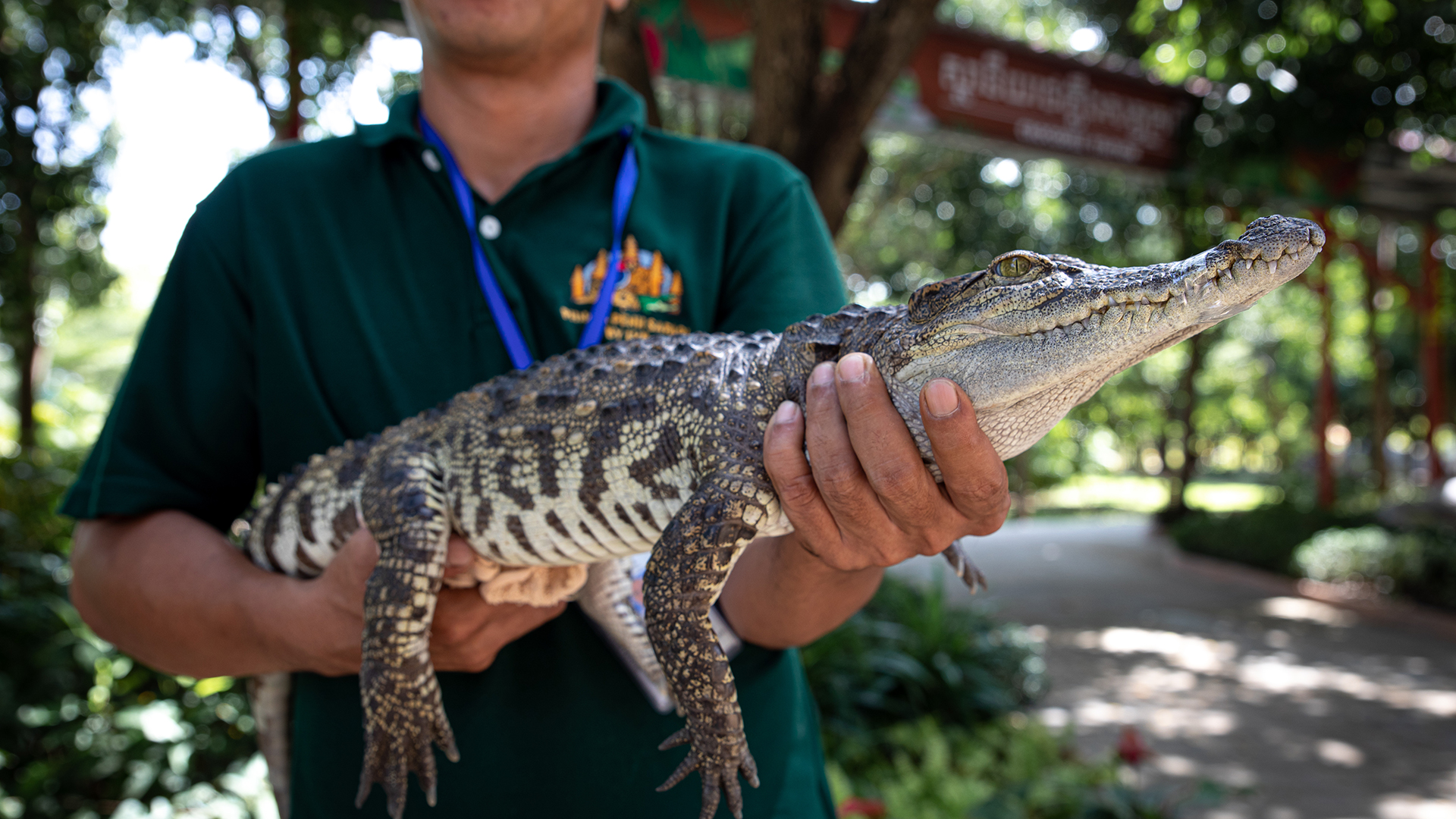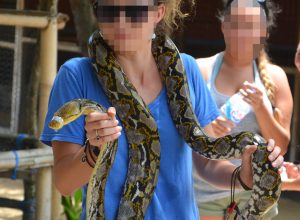
Animal Encounters and Interaction: Reptiles
Born Free strongly advises people not to participate in close contact activities with captive reptiles.

Animals such as snakes, lizards, turtles, and crocodilians are often used for close encounter activities and as photographic props. However, there are many animal welfare and public health and safety concerns involved with this close contact.
Reptiles have limited ability to control their own body temperature and rely on external sources of heat and shade. Temperature fluctuations, particularly low temperatures, can therefore be harmful.
Reptiles used as photographic props and for interaction are usually denied the opportunity to regulate their body temperature or seek shelter.
Many turtle hatcheries are exploitative, offering the chance to hold hatchlings and even adult turtles. Some may purposefully retain animals, rather than release them into the wild, to ensure a constant supply of turtles for public interaction purposes.

Reptiles, particularly snakes, are very sensitive to touch, vibration and strong odours, such as perfume. Therefore, handling can be extremely stressful. Reptiles can also carry diseases like salmonella, which can infect humans, particularly when the animal is distressed – such as when being handled.
A number of reptile species are venomous and potentially lethal. They can also inflict severe bite injuries.
Practices designed to make reptiles safer to handle have been known to include the removal of teeth and venom glands and jaws being taped, wired or even sewn shut.
